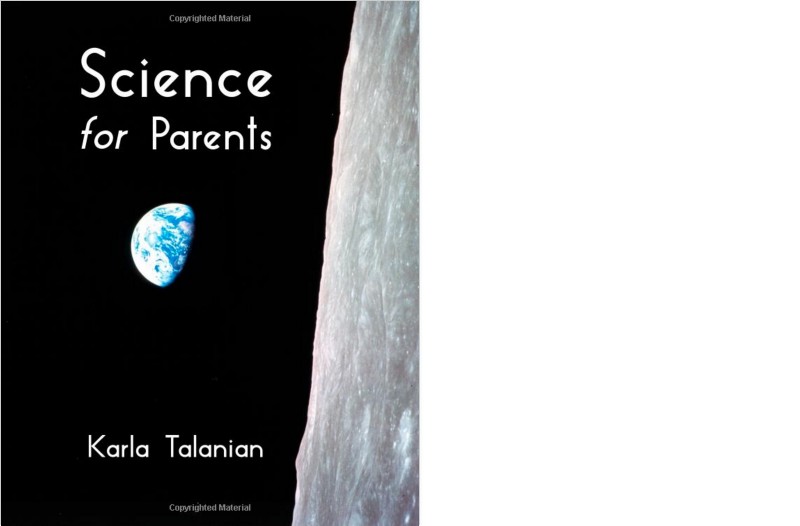Grade Level
3 - 5
minutes
15 minutes or fewer
subject
Physical Science
Activity Type:
Kitchen experiment, Convection, Household materials
Everyone knows the saying “heat rises,” right? Why does heat rise?
Let’s use the example of water in a pot. Take a pot full of cold water and place it on a stove. Turn the heat on, and the water near the bottom of the pot gets warmed faster than the water near the top. Eventually all the water will be at the same temperature because of the process of convection.
Convection is the movement of warmer matter into a space occupied by colder matter. When the heat is turned on, the water molecules near the bottom of the pot start to move faster. As they move faster, there is no increase in the number of water molecules, but because of their fast movement, the same number of molecules takes up more volume. Remember, density = mass / volume, so, by definition, the warmer water becomes slightly less dense than the colder water, where the molecules are moving at a relatively slower pace.
Same # of molecules in a smaller space = Higher density
Same # of molecules in a larger space = Lower density
To illustrate this concept of molecular density, imagine a roomful of toddlers. Each child represents one molecule. During snack time, they all sit at a table in a relatively small space. Here there is a higher density of children. At recess, the same number of children runs around frantically and takes up the entire room. The number of children hasn’t increased, but the kids now occupy a much larger volume of space. Their density has decreased.
Since the warmer, faster moving water is less dense than the colder, slower moving water, it rises to the top of the pot. As the warmer molecules rise to the top, they displace the colder molecules, which are then forced to sink to the bottom. As these colder molecules get close to the source of the heat, they start to move faster, become less dense, and rise to the top. The process continues.
Everyday Experiment – Convection can be pretty
Convection is an easy phenomenon to illustrate using stuff you’ve probably already got in your kitchen:
- Clear Pyrex® pan – loaf size or 9” circular types are good
- Vegetable Oil
- Spices – e.g., cinnamon, red pepper flakes, ground pepper, thyme
- Small votive candle
- Take two matching drinking glasses (8 – 16 oz size) and turn them upside down. Balance the Pyrex® pan on the two glasses.
- Fill the pan about a quarter of the way up with oil, and sprinkle spices (any one of those mentioned will do) so that most of the surface is covered.
- Light the candle and slide it between the two glasses, so that the flame is about 1” from the bottom of the pan. Don’t let the flame touch the glass.
Very quickly you will see the spices moving. An empty circle will appear directly above the candle, showing how the warmed oil (closest to the flame) is rising up and pushing the spices away. After a little while you will be able to see the flakes falling back down into the oil. They are actually being carried back down as cooler oil from the top sinks and the warmer oil continues to rise up.
If you are unwilling to use such a large quantity of oil, you can do the experiment with plain tap water and spices. The effect is the same, but not quite so visually dramatic. Follow the instructions above, substituting water for oil. Choose a spice that floats until it is waterlogged, then starts to sink. Red pepper flakes work well for this. After a minute or two, you will see the flakes begin to sink, except in the center—over the flame they will start to go up.
This process of convection happens everywhere, from the pot on your kitchen stove to cloud formations in the sky to the vast stretches of open ocean. It’s important to understand the take-home message: This process is essentially the same under all conditions. When heated, molecules move faster, and so they take up more space, and therefore are less dense than their cooler neighbors.
Convection Way Under Ground
This figure is a snapshot of one time-step in a model of the Earth’s mantle convection. Colors closer to red are hot areas, and colors closer to blue are cold areas. In this figure, heat received at the core-mantle boundary results in thermal expansion of the material at the bottom of the model, reducing its density and causing it to send plumes of hot material upwards. Likewise, cooling of material at the surface results in its sinking.
Everyday Knowledge – Convection Ovens
In a convection oven, a fan circulates air, keeping the temperature inside the oven more even. Let’s say you put a casserole from the refrigerator into a regular oven. The cold casserole will maintain a thin layer of cold (or cooler) air around itself for a long time, even though the rest of the oven is relatively much warmer. If the same casserole is placed into a convection oven, the oven’s fan constantly blows the air around, disrupting that layer of cooler air around the casserole, and allowing hot air to come in contact with the food. This is why convection ovens typically cook food faster or at a lower temperature than do regular ovens.
Everyday Knowledge – The Difference Between Soup & Stew
The process of convection also factors in to why it is more important to frequently stir a pot of stew cooking on the stove than it is to stir a pot of soup. Soup, being relatively thin and liquid-y, can rely on natural convection driven by changes in density to move the various molecules around. Stew, being a thicker mixture of solids and liquids, cannot move as easily. The molecules at the bottom of the pot cannot easily rise, and so those on the top cannot sink. The results can be a burnt bottom layer, and a cold top layer of stew.
Excerpted from Science for Parents © 2015 by Karla Talanian. Reprinted with permission from the author.
About the Author
 Karla Talanian earned her degree in chemistry from Smith College, and an M.S. in biotechnology from Worcester Polytechnic Institute. She worked for several years in the biotechnology industry. A mother of three (now grown) children, she spent many years volunteering in their classrooms and helping with homework. Along the way, she tried to teach the relevance of scientific facts to daily life through the use of analogies and everyday examples. Karla is now the administrator of a private mathematics school, and also teaches algebra to elementary school children. She is always amazed at just how capable children are at understanding mathematical concepts. As a teacher, she tries to engage her students’ interest by teaching why they need to solve an equation in a certain way, not just how to solve it. When she’s not teaching or writing, Karla enjoys biking, hiking, and kayaking with her husband.
Karla Talanian earned her degree in chemistry from Smith College, and an M.S. in biotechnology from Worcester Polytechnic Institute. She worked for several years in the biotechnology industry. A mother of three (now grown) children, she spent many years volunteering in their classrooms and helping with homework. Along the way, she tried to teach the relevance of scientific facts to daily life through the use of analogies and everyday examples. Karla is now the administrator of a private mathematics school, and also teaches algebra to elementary school children. She is always amazed at just how capable children are at understanding mathematical concepts. As a teacher, she tries to engage her students’ interest by teaching why they need to solve an equation in a certain way, not just how to solve it. When she’s not teaching or writing, Karla enjoys biking, hiking, and kayaking with her husband.
Meet the Writer
About Karla Talanian
Karla Talanian is the author of Science for Parents, a book inspired by many hours spent helping her own children with their science homework. She is an elementary math teacher and the administrator of a mathematics enrichment school.
3 thoughts on “Convection Can Be Pretty”
Comments are closed.



why is the warmer air faster than colder air?
This person is totally unqualified to write a book on this topic. I’m shocked that Science Friday even has this on their website – apparently, there is no one at Science Friday reviewing the books that they are promoting.
Hi! Thanks for writing. Our resources are vetted for their accuracy, clarity, ease of use and enjoyment by students. If you have specific issues with this particular resource, please feel free to email me at educate@sciencefriday.com and I’ll be happy to discuss them out with you.